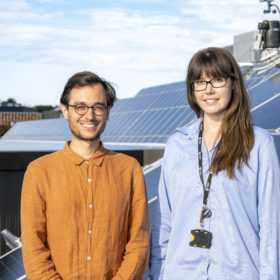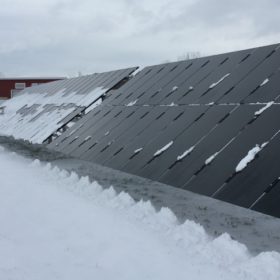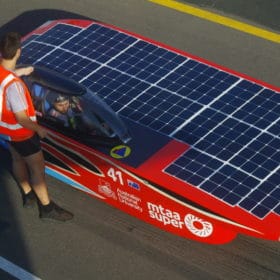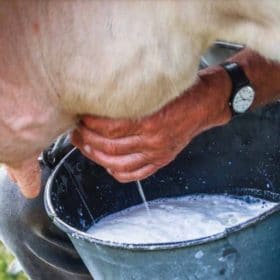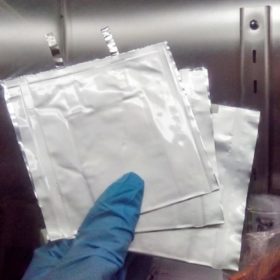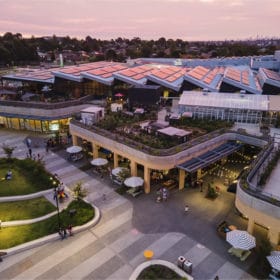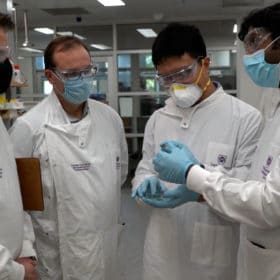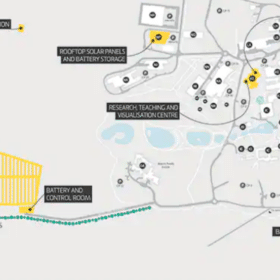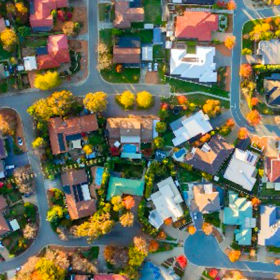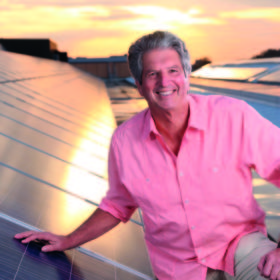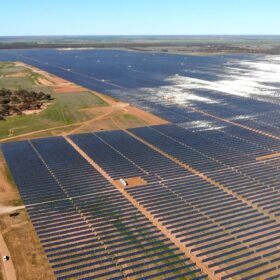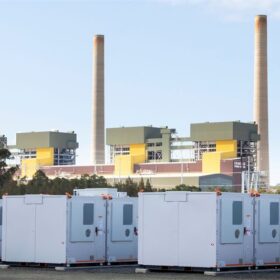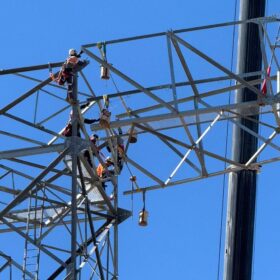UNSW digs the data: How much solar energy is lost through automated inverter settings?
In a huge data-crunching project designed to inform rooftop solar-export policy and regulations, UNSW technical and social researchers delve into the costs and effectiveness of inverter standards.
Going fission! How scientific enquiry by UNSW may push solar cell efficiency to 38.2%
Cross-pollination of scientific and engineering thought within the ARC Centre of Excellence for Exciton Science has led to promising findings on the the cool solar-cell efficiency-boosting mechanism known as singlet fission.
Australia’s only solar manufacturer helps students construct solar race car
Tindo Solar, Australia’s only solar panel manufacturer, has teamed up with a group of engineering students from the Australian National University to help them construct a solar race car.
Land of milk and honey, Hycel set to work on hydrogen opportunities for dairy industry
It has been said that it is no use crying over spilt milk, and similarly there is no use crying over emissions already spilt by the dairy industry, there is only to curb those emissions and Deakin University’s Hycel Technology Hub is looking to do that for the dairy industries in both Australia and Uruguay.
Researchers discover new method to make old lithium batteries new
Scientists investigating the aging mechanisms affecting today’s lithium-ion batteries observed that the loss of lithium over time is one of the main causes of performance loss. With this in mind, they developed and tested a “relithiation” process that promises to eliminate much of the cost and complexity from recycling battery components and materials.
Changing the metrics of desirability: Melbourne’s Burwood Brickworks achieves momentous certification
The eastern suburbs of Melbourne are now home to the most certifiably sustainable shopping centre in the world. But to think of it only in those terms hardly does the project justice – rather, Melbourne is now home to a building which defies the limits of its own concept, imploring people to reconsider the value metrics through which space, cities and perhaps even lifestyles are appraised.
Brisbane-based tech firm and University of Queensland team up to transform energy storage
The ‘Graphene Revolution’ is drawing near in energy storage, the sector where it is arguably needed most. Univeristy of Queensland scientists who devised aluminium-ion batteries with graphene electrodes have teamed up with Brisbane-based Graphene Manufacturing Group to push the technology into the commercial prototype phase, a potentially early marker for a technology that could transform energy storage.
Deakin University’s enterprising plans for its new microgrid
Microgrids afford an opportunity to essentially become a power station operator. That opportunity, says Dr Adrian Panow, the Director of Deakin’s Energy Initiative, unearths a number of urgent questions ranging from the technical all the way to the ethical. They are questions cross-faculty researchers at Deakin University, now home to a sizeable microgrid, plan to interrogate.
Victorian government launches VPP pilot program
Victoria’s Andrews Government has launched a battery aggregation pilot program which seeks to build an “approved aggregation provider list” alongside the Solar Homes battery rebate. The Victorian Government sees the future of virtual power plants and microgrids and this is an opportunity for both consumers and providers to benefit.
UNSW’s Prof Martin Green ups PV yield by cooling solar modules
In efforts to improve PV performance by helping modules keep their cool, the Martin Green team is going for 10 degrees lower operating temperatures. Cherry-picking the most practical approaches could deliver 50% extended project life.
